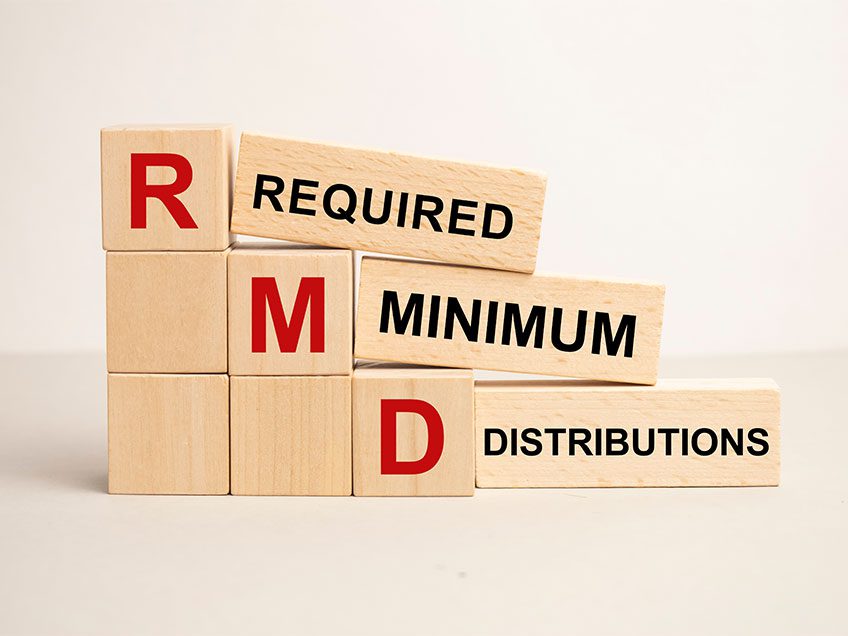
Turn Your Savings Into a Steady Retirement Paycheck
You’ve spent your entire career earning a paycheck. But in retirement, there’s no employer sending you a direct deposit every two weeks.
So… how do you pay yourself?
That’s the heart of retirement readiness: creating a personal, sustainable, and secure income stream that lasts as long as you do.
In this article, we’ll show you how to turn your savings into a retirement paycheck—with less stress and more confidence. Read More

When planning for retirement, one of the most overlooked financial opportunities is a life settlement. As retirees seek ways to maximize their income and minimize risk, selling a life insurance policy through a life settlement can be a powerful tool—especially for those with policies they no longer need or can’t afford to maintain. In this article, we’ll explain what life settlements are, how they work, their pros and cons, and how they can be used to support a secure retirement.
What Is a Life Settlement?
A life settlement is the sale of an existing life insurance policy to a third-party investor for a cash payment. The payment is typically more than the policy’s cash surrender value but less than its face (death benefit) value.
After the sale, the buyer becomes the new owner and beneficiary of the policy. They take over premium payments and receive the death benefit when the original policyholder passes away.
Life settlements are generally available to seniors age 65 and older who own a life insurance policy with a face value of $100,000 or more. Policies may include universal life, whole life, variable life, or even term life (if it’s convertible). Read More

Introduction
In today’s uncertain financial environment, many people rely on 401(k)s, IRAs, and stock market investments to build wealth. However, these traditional methods come with risks—market volatility, government restrictions, and unexpected tax liabilities.
What if there was a way to grow wealth predictably, access your money anytime, and bypass banks for major purchases—all while protecting your financial future? That’s where the Bank On Yourself concept comes in. Read More

A record number of Americans now have $1 million or more saved in their 401(k)s—a milestone many dream of when planning for retirement. But despite this achievement, most retirees face a critical challenge: How do you turn your 401(k) into a reliable income stream for life?
Saving for retirement is only half the equation—making your savings last is just as crucial. Many retirees unknowingly expose themselves to risks like market downturns, inflation, and outliving their money. That’s where a Fixed Index Annuity (FIA) can help, providing a guaranteed lifetime income stream and protection against volatility. Read More

Planning for retirement can be both exhilarating and overwhelming, especially when it comes to designing a reliable income strategy. With this newly released resource, “How to Create Safe Retirement Income Strategies,” retirees and future retirees now have access to an expert guide on building a secure, steady income that can withstand life’s uncertainties and help fulfill their retirement dreams. Here’s an overview of what this resource offers and how it can support your financial future.
Transitioning from a regular paycheck to drawing from savings and investments is a big change that requires thoughtful planning. This guide focuses on how to assess your financial needs, minimize risks, and ensure that your income supports your lifestyle throughout retirement. It addresses critical topics like inflation, rising healthcare costs, and tax-efficient strategies, empowering readers to build a resilient retirement plan that promotes peace of mind. Read More

What’s your plan to replace your income in retirement?
As retirement approaches, one of the biggest concerns for many is how to replace the steady paycheck they’ve relied on during their working years. Without proper planning, retirees can find themselves facing a financial shortfall that impacts their lifestyle and long-term security. That’s why understanding income replacement strategies is crucial to maintaining financial independence and ensuring a comfortable retirement. This article explores key strategies for replacing your paycheck in retirement while focusing on financial security.
Understanding Income Replacement in Retirement
Income replacement refers to strategies that generate enough income to sustain your lifestyle after you stop working. While Social Security benefits can provide some income, they are rarely enough to fully replace a working paycheck. This gap often leaves retirees searching for additional sources of income to maintain their quality of life.
When planning for retirement, one important goal is to replace around 70-90% of your pre-retirement income. This is often referred to as the “income replacement ratio.” The percentage you need depends on factors like your lifestyle, healthcare expenses, and whether you have debts or other financial responsibilities.
To address this need, retirees must develop a plan that combines multiple income streams, including Social Security, pensions (if available), savings, and investments. Read More

Planning for retirement is a significant financial decision, and the Safe Money Report is your essential resource for ensuring financial security during this critical phase of life. This report is designed to help you navigate the complexities of retirement with strategies that focus on low-risk investments, income planning, and wealth preservation. By following the principles outlined in this report, you can confidently approach retirement knowing that your financial future is secure.
Introduction to the Safe Money Report
The New Retirement Report introduces a new era of retirement planning, reflecting the challenges and opportunities facing today’s retirees. It highlights the growing number of individuals entering retirement and the unique hurdles they face, such as increased longevity, economic uncertainty, and the need for more innovative financial solutions. Understanding these factors is crucial as they directly impact how you should plan and allocate your retirement assets.
The New Retirement Landscape
Read More

When it comes to planning for retirement, understanding how your savings stack up against the average retirement savings by age is crucial. Many people delay making important financial decisions, not realizing the significant impact that waiting can have on their retirement security. This article explores how your timing, in comparison to the average retirement savings by age, can affect your ability to achieve a stable and guaranteed income in retirement.
Understanding Average Retirement Savings by Age
Knowing the average retirement savings by age can help you assess whether you’re on track for retirement. For example, if you’re 40 years old and your retirement savings are close to the average for your age group, you might feel reassured. However, even if your savings are average, the timing of when you secure your retirement income can have a profound impact on your future financial security.
The Cost of Waiting: A Closer Look
Consider two hypothetical 40-year-old individuals, Savvy Sue and Cautious Bob. Both want to retire at 60 and aim to generate an additional $25,000 in annual lifetime income. Despite both having average retirement savings for their age, their approaches to securing this income differ. Sue decides to lock in her retirement income at age 40, while Bob delays his decision until age 50. Read More

As retirement approaches, managing income streams and optimizing savings becomes crucial for ensuring financial stability and comfort in the golden years. In 2024, the introduction of process-based experiences for managing retirement income, which involves the strategic coordination of income sources, investment withdrawals, and tax management, is becoming increasingly common. Here’s a detailed look at these innovative approaches and tools that are shaping retirement planning today.
Strategic Coordination of Income Sources
One of the key aspects of process-based retirement income management is the strategic coordination of various income sources. This includes understanding the timing and interaction between Social Security benefits, pensions, annuities, and personal savings. By carefully planning when and how to tap into these sources, retirees can maximize their income while minimizing tax liabilities. Read More

New IRS and Treasury Department Regulations on Required Minimum Distributions: Key Takeaways and Implications
Today, the IRS and Treasury Department unveiled long-anticipated final regulations on Required Minimum Distributions (RMDs). These RMDs are mandatory yearly withdrawals from individual retirement accounts (IRAs), 401(k)s, and other tax-deferred retirement plans. The new regulations clarify changes from the SECURE Act of 2020 and the SECURE 2.0 Act of 2022 and will take effect on January 1, 2025.
Read More


















